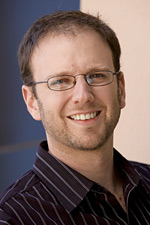From the editor: Access to science
 |
| Photo: Reidar Hahn, Fermilab |
The modern age of science was born in a system of patronage and independently wealthy hobbyists pursuing questions that would satisfy their curiosity or fill their pocketbooks. The first modern scientists quickly discovered there was a wider group of people who shared their interests, even if not the circumstances that allowed them to pursue scientific research. Public lectures and demonstrations of new technologies were always popular and the people clamored for the next new result.
As science became further professionalized and institutionalized and the number of people participating grew, the dynamics of how scientists interact with the public changed. But public interest has always remained and we see many contemporary examples in this issue of symmetry.
A considerable portion of people today form their impressions of science from watching television and film. Scientists realize the power of these media and are working to exploit entertainment to carry accurate scientific messages to the public (see The Wrong Stuff). They are not always successful but the effort is worthwhile.
More authentic experiences of science can be gained from direct interactions between scientists and members of the public. Fermi National Accelerator Laboratorys ILC Citizens Task Force toured experimental tunnels to better understand what would be involved in constructing the International Linear Collider at Fermilab if that were to happen (see Essay: Emily Saltijeral-DeMar). In a different scenario, members of the public heavily courted visiting scientists who were assessing potential sites for a Deep Underground Science and Engineering Laboratory (see Day in the Life: DUSEL Mine Tour). People repeatedly show their interest in science when given the opportunity.
Even more direct access to the results of science could become easier if the open access publishing movement achieves its aims (see Free for All). Currently, scientific papers are readily available only through subscriptions to journals. Even though most members of the public wont want direct access to technical research papers, it is important that the results of research be available to anybody who desires it.
Whenever scientists present an opportunity to make connections with the public, the public engages. It is up to scientists to provide those opportunities, as closer connections with the public work to aid the scientific process in the long term.
David Harris, Editor-in-chief
Click here to download the pdf version of this article.


